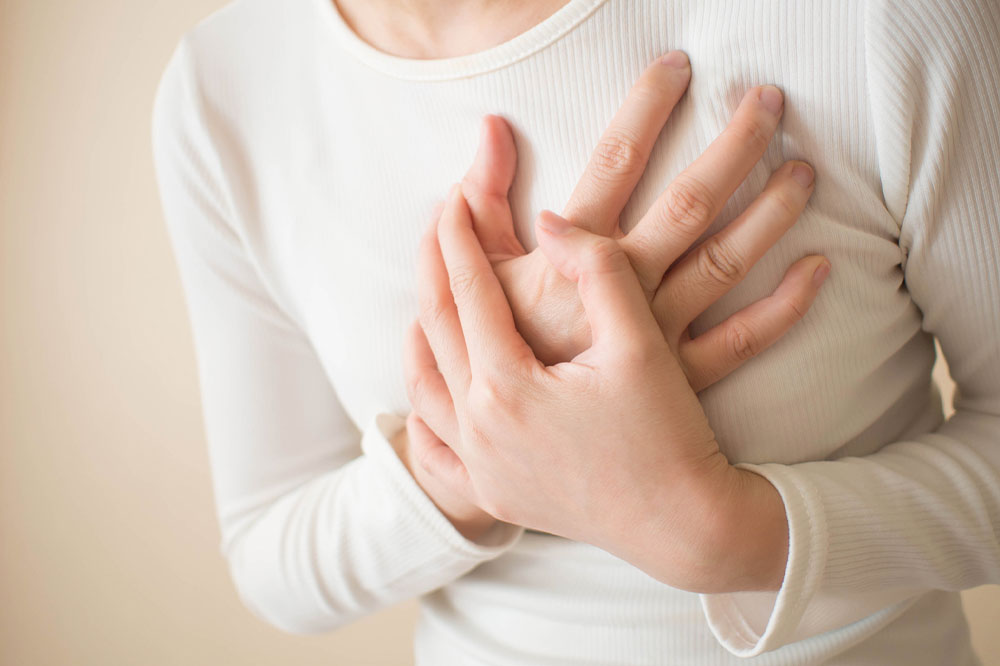An Overview of the Signs and Remedies for Atherosclerosis
Arteries carry oxygenated blood from the heart to other parts of the body. In normal conditions, these arteries will be flexible and with excellent elasticity. However, in atherosclerosis, they become stiff and thick. Atherosclerosis is a cardiovascular disease that is characterized by the accumulation of plaque inside the arteries. Even though it is a potential cardiac problem, it is treatable and preventable. Scroll down to learn about symptoms, diagnosis, and atherosclerosis treatment.
Atherosclerosis – An overview
Atherosclerosis is the build-up of fats and cholesterol inside the arteries, resulting in the formation of plaques. These plaques can restrict the healthy blood flow to your body by hardening and narrowing down the walls of arteries.

It can occur in any artery, including the heart, kidney, and legs. Nonetheless, it begins with slight damage or injury to the thin endothelium layer. These plaques might rupture and burst in some instances, leading to a severe blood clot. When left untreated, atherosclerosis can lead to life-threatening conditions.
Symptoms and signs of atherosclerosis
It is difficult to note symptoms in the mild or initial stage; the signs and symptoms of atherosclerosis disease tend to appear after the constriction or clogging of arteries.
Heart (Coronary arteries)
Coronary arteries provide oxygenated blood to the heart, and when it is limited due to this condition, then it will cause a heart attack or angina, inducing symptoms such as:
Sudden and sharp pain in the chest, neck, back, arms, jaw, or shoulders.
Pain or pressure in the chest region that might worsen with activity and reduces during rest hours
Shortness of breath
Brain (Cerebral arteries)
The brain receives its blood supply from cerebral arteries. The patient may suffer the following signs and symptoms when atherosclerosis limits the blood supply:
Drooping of facial features
Inability or difficulties in moving your legs or arms
Temporary loss of vision in one eye
Loss of balance or sudden dizziness
Numbness or weakness in the limb muscles
Difficulty in hearing or development of slurred speech
When atherosclerosis or plaque formation in the acute cerebral arteries is left unnoticed, the symptoms will progress and indicate the onset of transient ischemic attack (TIA).
Legs and arms (Peripheral arteries)
Peripheral arteries supply blood to the limbs, usually the legs, and the function can be hampered by atherosclerosis. The most common symptoms of this type are listed below:
Sudden numbness or weakness in legs or arms (Claudication)
Difficulties in moving the legs and performing simple activities like walking
Change in leg color
Lower blood pressure in the affected legs
The poor wound-healing ability
Hair loss on the affected legs
Coldness in the lower foot or leg
Kidney (Renal arteries)
Renal arteries supply blood and oxygen to the kidneys. When these symptoms are not treated at the right time, it might lead to the development of chronic conditions and even renal or kidney failure. The affected patient might experience:
Back pain
Decreased output rate of urine
Blood in the urine
Side pain
High blood pressure and associated signs, including vision problems, headache, and swelling
Atherosclerosis treatment
Lifestyle modifications are the first line of defense against the symptoms and signs of atherosclerosis disease. However, prescriptions and surgical procedures may be required to treat some cases.
There are various options, such as statins, blood thinners, and blood pressure prescriptions, that might delay the progress or prevent the consequences of atherosclerosis.
When the condition is severe, the physician might suggest surgical procedures, including atherectomy, angioplasty, bypass surgery, and more.
Prevention of atherosclerosis
Staying proactive and implementing certain lifestyle changes can help prevent or slow the progress of atherosclerosis and related conditions. The preventive measure include:
Eating heart-healthy food
Adapt to a well-balanced and nutritious meal plan, including fruits, vegetables, whole grains, lean meats, beans, and peas. A heart-healthy meal plan should be low in added sugar, solid fats, refined grains, and sodium.
Increase your physical activity level
Ensure to stay as active as possible. For instance, you must perform moderate aerobic exercise at least five days a week.
Ideal body fat management
Being overweight makes one more susceptible to developing atherosclerosis. Hence, follow a proper food regime and exercise regimen to maintain a certain BMI level as recommended.
Relieve stress and tension
Reduce the stress and tension in your life by employing stress management techniques like deep breathing, yoga, and muscle relaxation. If you have health ailments like diabetes or high blood pressure, keep them under control to improve your overall health.
To conclude
As a chronic and steadily progressing silent disease, atherosclerosis can feel quite sudden, leading to heart attack or stroke. However, there are plenty of options to prevent the occurrence or recurrence of the condition in the first place. With the right treatment, one may not just slow the progress of the initial stages of atherosclerosis; they might be successful in reversing the signs. Remember to take one step at a time regarding lifestyle adjustments to manage the condition in the long run.

